UV溶融石英(UVFS)平凸レンズ、コーティング無し
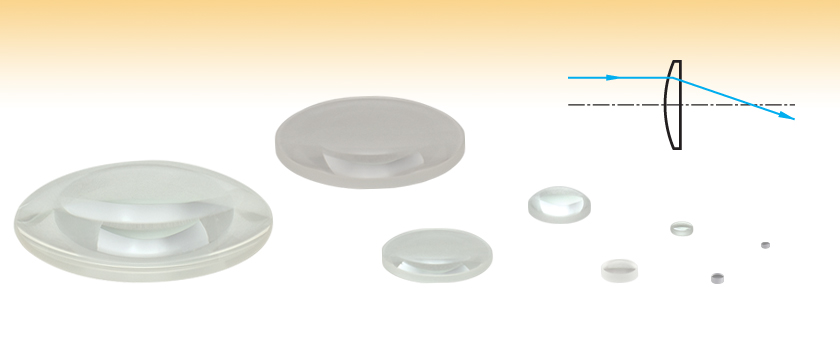
- UV-Grade Fused Silica
- Broadband AR Coating Available
- Near Best Form for Infinite Conjugate Applications
- Wavelength Range: 185 nm - 2.1 µm
- Zemax Files Available
LA4372
(Ø75 mm)
LA4984
(Ø2")
LA4380
(Ø1")
LA4647
(Ø1/2")
LA4194
(Ø6 mm)
LA4249
(Ø5 mm)
LA4039
(Ø3 mm)
LA4024
(Ø2 mm)

Please Wait
| Common Specifications | ||
|---|---|---|
| Available Diameters | 2 mm and 3 mm | 5 mm, 6 mm, 1/2", 1", 2", and 3" |
| Lens Shape | Plano-Convex | |
| Substrate Material | UV-Grade Fused Silicaa | |
| Wavelength Range | 185 nm - 2.1 μm | |
| Design Wavelength | 587.6 nm | |
| Index of Refraction | 1.458 @ 587.6 nm | |
| Surface Flatness (Plano Side) | λ/2b | |
| Spherical Surface Powerc (Convex Side) | 3λ/2b | |
| Surface Irregularity (Peak to Valley) | λ/4b | |
| Diameter Tolerance | +0.00 / -0.02 mm | +0.00 mm / -0.10 mm |
| Thickness Tolerance | ±0.03 mm | ±0.1 mm |
| Surface Quality | 60-40 Scratch-Dig | 40-20 Scratch-Dig |
| Centration | ≤5 arcmin | < 3 arcmin |
| Abbe Number | Vd = 67.82 | |
| Clear Aperture | > 90% of Diameter | |
| Focal Length Tolerance | ±1% | |
| 下の型番横の赤いアイコンをクリックすると、各製品のZemaxファイルをダウンロードいただけます。また、こちらからは当社の全てのZemaxファイルの一括ダウンロードが可能です。 |
特長
- UVグレードの溶融石英
- 波長範囲:185 nm~2.1 μm (コーティング無し)
- 焦点距離:4~1000.0 mm
当社のUVグレード溶融石英平凸レンズは、Ø2 mm~Ø75 mmのサイズをご用意しています。UVグレードの溶融石英は、深紫外域で優れた透過率を示し、また実質的にレーザ誘起蛍光がないため(193 nmで測定)、UVから近赤外域までの用途に適しています。 また、UV溶融石英は、N-BK7よりも高い均一性と低い熱膨張率を備えています。
平凸レンズは、コリメート光を後方焦点へ集光し、一方、点光源からの光を平行光にします。球面収差を最小に抑えるためには、集光の際にはコリメート光源をレンズの曲面から入射する必要があります。また、コリメートする際には点光源を平坦な面に入射する必要があります。画像の質を重要視しない場合、平凸レンズはアクロマティック複レンズの代用品としてもお使いいただけます。
レンズの焦点距離は、下記の単純化された厚肉レンズの公式から計算できます。
f = R/(n-1)、
ここで、nは屈折率、Rはレンズ表面の曲率半径です。レンズはアッベ数が67.82のUV溶融石英ガラスから加工されています。アッベ数は分散の指標です。
平凸レンズと両凸レンズは、どちらもコリメートされた入射光を収束しますが、絶対倍率が0.2未満か5以上の場合は平凸レンズのご使用をお勧めします。 倍率が0.2~5の場合は、一般的に両凸レンズのご使用をお勧めします。
これらのレンズの取付け用に固定式レンズマウント もご用意しております。曲率の大きいレンズを取り付ける際にスパナレンチ用に隙間を作る、SM05、SM1、SM2ネジ付きの厚型固定リングもご用意しています(詳細は「取付けオプション 」タブをご参照ください)。
UV溶融石英レンズキットもご提供可能です。詳細についてはこちらをご覧ください。
カスタム仕様のコーティングにも対応いたします。お見積については、当社までお問い合わせください。
| Quick Links to Other Spherical Singlets | ||||||
|---|---|---|---|---|---|---|
| Plano-Convex | Bi-Convex | Best Form | Plano-Concave | Bi-Concave | Positive Meniscus | Negative Meniscus |
この透過率曲線は、厚さ10 mmのコーティング無しのUV溶融石英のサンプルの表面に、光を垂直入射して得られたものです。尚、この透過率には表面反射が含まれています。
その他のARコーティング:
当社ではさまざまな中心波長に対応するVコーティングや、UV、可視(VIS)または近赤外(NIR)域用の広帯域ARコーティングをご用意しています(下記参照)。UV溶融石英平凸レンズ用のすべてのコーティングはこちらからご覧いただけます。
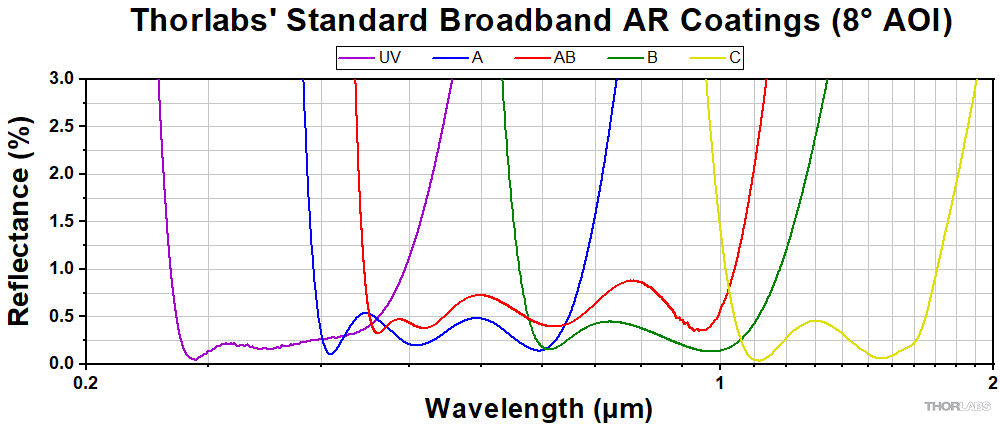
| Recommended Mounting Options for Thorlabs Lenses | ||
|---|---|---|
| Item # | Mounts for Ø2 mm to Ø10 mm Optics | |
| Imperial | Metric | |
| (Various) | Fixed Lens Mounts and Mini-Series Fixed Lens Mounts for Small Optics, Ø5 mm to Ø10 mm | |
| (Various) | Small Optic Adapters for Use with Standard Fixed Lens Mounts, Ø2 mm to Ø10 mm | |
| Item # | Mounts for Ø1/2" (Ø12.7 mm) Optics | |
| Imperial | Metric | |
| LMR05 | LMR05/M | Fixed Lens Mount for Ø1/2" Optics |
| MLH05 | MLH05/M | Mini-Series Fixed Lens Mount for Ø1/2" Optics |
| LM05XY | LM05XY/M | Translating Lens Mount for Ø1/2" Optics |
| SCP05 | 16 mm Cage System, XY Translation Mount for Ø1/2" Optics | |
| (Various) | Ø1/2" Lens Tubes, Optional SM05RRC Retaining Ring for High-Curvature Lenses (See Below) | |
| Item # | Mounts for Ø1" (Ø25.4 mm) Optics | |
| Imperial | Metric | |
| LMR1 | LMR1/M | Fixed Lens Mount for Ø1" Optics |
| LM1XY | LM1XY/M | Translating Lens Mount for Ø1" Optics |
| ST1XY-S | ST1XY-S/M | Translating Lens Mount with Micrometer Drives (Other Drives Available) |
| CXY1A | 30 mm Cage System, XY Translation Mount for Ø1" Optics | |
| (Various) | Ø1" Lens Tubes, Optional SM1RRC Retaining Ring for High-Curvature Lenses (See Below) | |
| Item # | Mount for Ø1.5" Optics | |
| Imperial | Metric | |
| LMR1.5 | LMR1.5/M | Fixed Lens Mount for Ø1.5" Optics |
| (Various) | Ø1.5" Lens Tubes, Optional SM1.5RR Retaining Ring for Ø1.5" Lens Tubes and Mounts | |
| Item # | Mounts for Ø2" (Ø50.8 mm) Optics | |
| Imperial | Metric | |
| LMR2 | LMR2/M | Fixed Lens Mount for Ø2" Optics |
| LM2XY | LM2XY/M | Translating Lens Mount for Ø2" Optics |
| CXY2 | 60 mm Cage System, XY Translation Mount for Ø2" Optics | |
| (Various) | Ø2" Lens Tubes, Optional SM2RRC Retaining Ring for High-Curvature Lenses (See Below) | |
| Item # | Adjustable Optic Mounts | |
| Imperial | Metric | |
| LH1 | LH1/M | Adjustable Mount for Ø0.28" (Ø7.1 mm) to Ø1.80" (Ø45.7 mm) Optics |
| LH2 | LH2/M | Adjustable Mount for Ø0.77" (Ø19.6 mm) to Ø2.28" (Ø57.9 mm) Optics |
| VG100 | VG100/M | Adjustable Clamp for Ø0.5" (Ø13 mm) to Ø3.5" (Ø89 mm) Optics |
| SCL03 | SCL03/M | Self-Centering Mount for Ø0.15" (Ø3.8 mm) to Ø1.77" (Ø45.0 mm) Optics |
| SCL04 | SCL04/M | Self-Centering Mount for Ø0.15" (Ø3.8 mm) to Ø3.00" (Ø76.2 mm) Optics |
| LH160CA | LH160CA/M | Adjustable Mount for 60 mm Cage Systems, Ø0.50" (Ø13 mm) to Ø2.00" (Ø50.8 mm) Optics |
| SCL60CA | SCL60CA/M | Self-Centering Mount for 60 mm Cage Systems, Ø0.15" (Ø3.8 mm) to Ø1.77" (Ø45.0 mm) Optics |
曲率が高い光学素子の取付け
当社の固定リングはマウント無しの光学素子をレンズチューブまたは光学マウント内に固定します。リングの位置固定には対応するスパナレンチを使用します。平面光学素子や曲率が低い光学素子用には黒アルマイト製の 固定リングをØ5 mm~Ø101.6 mm(Ø4インチ)まで標準品としてご用意しております。曲率が高い光学素子用には、厚みのある固定リングをØ12.7 mm(Ø1/2インチ)、Ø25.4 mm(Ø1インチ)、Ø50.8 mm(Ø2インチ)でご用意しております。
厚みのある固定リングは非球面レンズ、短焦点距離の 平凸レンズ、 コンデンサーレンズなど、曲率が高い光学素子の取り付けに使用します。右の動画のように通常の固定リングを曲率が高い光学素子に使用した場合、スパナレンチのガイドフランジが光学素子の表面に接触し、光学素子を傷つける可能性があります。また、スパナレンチと固定リングの間に隙間ができるため、固定リングが正しく締め付けられません。厚みのある固定リングは、スパナレンチが光学素子の表面に接触することなくレンズを固定させることができます。
| Posted Comments: | |
Deepak Korhalkar
(posted 2024-03-18 01:55:56.58) Kindly let us know the EFL & BFL for this lens ( LA 4647) at 2.1 micron wavelength.
Thanks & Regards. cdolbashian
(posted 2024-03-29 12:04:38.0) Thank you for contacting Thorlabs. The designed effective focal length and back focal length of LA4647 at 2.1um are 21.1mm and 18.1mm respectively. The data can be extracted from the Zemax model, typically found within the prescription data, which can be download from the "Docs" icon in front of the part number. Deepak Korhalkar
(posted 2023-12-05 20:27:34.29) May i request you to kindly give us a spot diagram for this lens, for a perfectly parallel beam at 2 micron wavelength normally incident on the lens on the Curved surface.
Thanks & Regards. cdolbashian
(posted 2023-12-11 10:42:25.0) Thank you for reaching out to us with this request. I have contacted you directly with this information, though for future requests similar please reach out to your local tech support team. user
(posted 2022-04-29 19:46:34.627) The ad rates these to 185nm but the data for transmission is only to 200nm. Can you please supply the full CVS data set? Thank you! jgreschler
(posted 2022-05-03 09:14:37.0) Thank you for reaching out to Thorlabs. Additional data can be requested by emailing techsupport@thorlabs.com. Thomas.Bluemchen
(posted 2018-12-14 10:12:23.86) Hallo,
warum unterscheiden sich die Daten in der Zeichnung und im zmx-File? Bitte senden Sie mir korrekte Designdaten, damit ich die Linse in einem Design verwenden kann. Bieten Sie auch AR-Coatings für 193nm an?
Mit freundlichen Grueßen
Th. Bluemchen nbayconich
(posted 2018-12-17 03:25:17.0) Thank you for contacting Thorabs. Would it be possible to mention the particular discrepancy you were referring to? Is there some specific information you were looking for like transmission, reflection etc?
I will reach out to you directly to discuss our custom capabilities. deepak.korhalkar
(posted 2017-02-19 22:01:00.287) This lens is 1 inch dia. Can you offer a variation with only change being 30 mm dia. Remaining all stays same ( except edge thickness ). Also, can this be offered with 'D' coating - covering 2.1 micron wavelength ? Qty required will be 20.
Thanks & regards. tfrisch
(posted 2017-02-20 10:04:03.0) Hello, thank you for contacting Thorlabs. I have forwarded your request to our Tech Support Team to assist with custom quoting. They will reach out to you directly. mg9420
(posted 2016-08-02 13:07:45.863) Hello,Thorlabs
Would you customize some special specification of lens for us?
The lenses are similar to LA4647 that diameter is half inch ,but they focal Length change to 15mm and 25mm.
Quantity
1.f=25mm *2
2.f=15mm *2 euv.ilya
(posted 2016-02-09 17:15:45.857) Hello, I'm trying to calculate the exact focal distance of these lenses using formula R/(n-1) for 355 nm (3rd harmonic of Nd:YAG). Would you please tell me the exact value of refractive index at this wavelength? Alternatively, you can send me .txt or .csv data with the whole range available. Thanks! besembeson
(posted 2016-02-10 09:14:40.0) Response from Bweh at Thorlabs USA: These are made from UV fused silica. It is 1.4761 at 355nm. We also have the dispersion plot at the following link: http://www.thorlabs.com/newgrouppage9.cfm?objectgroup_id=6973&tabname=UV%20Fused%20Silica. marina.servol
(posted 2013-10-17 11:46:17.017) Hello,
we use UV-fused silica lenses at 300 nm and we notice a blue light emitted by the lens. Is it normal? Could it create problems on the quality of the beam?
Thanks in advances jlow
(posted 2013-10-24 09:32:00.0) Response from Jeremy at Thorlabs: The UVFS lens should have very low autofluorescence. I will contact you directly to discuss about this. s.lazare
(posted 2013-09-05 10:35:23.88) We are looking for lenses f=20 mm like LA4647, but do not want any silica fluorescence when using LED at 365 nm, 280 nm or Laser at 248 nm. Could you provide some data on Nikon NIFS-S series. Thanks Sylvain tcohen
(posted 2013-09-06 12:05:00.0) Response from Tim at Thorlabs: Thank you for contacting us. We don’t have this data on hand but will organize testing. I’ve contacted you via email with more details. CobbJM
(posted 2013-07-18 14:02:54.04) Can you tell me what homogeneity grade of fused silica these lenses are made from? Where is the material from, eg, Schott, Corning, Heraeus, etc. jlow
(posted 2013-07-18 16:12:00.0) Response from Jeremy at Thorlabs: The glass used is from Nikon NIFS-S series. The homogeneity of this glass is not specified by Nikon. jlow
(posted 2012-08-29 12:19:00.0) Response from Jeremy at Thorlabs: Thank you for your feedback on this. We can put different AR coatings on these lenses. I will contact you directly regarding a quote for this. cherold
(posted 2012-08-28 15:57:03.0) I would like to echo previous requests for other AR coatings on fused silica lenses. 532/1064 nm coatings would be particularly useful. Fused silica has a much lower thermal expansion coefficient (than other common glasses) making it a much better substrate for high power (10s of Watts, CW) optics. tcohen
(posted 2012-06-26 10:19:00.0) Response from Tim at Thorlabs: Thank you for your interest in our UVFS Lenses. Although we do not have tested LIDT data for our uncoated substrates, these have very high damage thresholds in comparison to coated or cemented substrates. There is a wealth of information online about LIDT on bulk substrate. As a reference, this paper http://www.precisionphotonics.com/vitem_axpd.asp?id=21&itemtype=Technicalpapers has useful information on damage thresholds. Damage thresholds depend on the optic (substrate, surface quality, any dust or dirt accumulation, coatings, cement) as well as the source (beam diameter, pulse duration, rep rate, intensity profile, wavelength). I will contact you to discuss your source and its suitability with our UVFS lenses. sunil.phys
(posted 2012-06-26 09:02:52.0) What is the damage threshold of UV fused silica used to make lenses in the family of LA4380 (uncoated)? bdada
(posted 2011-07-27 19:19:00.0) Response from Buki at Thorlabs:
Thank you for your feedback Pablo. The performance of the lens is lower than it should be. We have contacted you to initiate the return and replacement of the lenses. moreno
(posted 2011-07-26 07:47:50.0) Dear Sir/Madam,
I am Pablo Moreno, R&D Engineer at Synova S.A. Thorlabs is our first choice in a wide range of products.
We recently acquired a couple of lenses, the LA4184 and the 100 mm focal version. I observe that the transmission of these lenses is very low (ca. 70%). Is this normal? The lenses are UV coated.
To measure the transmission we use a 355nm UV laser, 700 mW, CW. It should be single mode, but I observe also a weak second mode.
It might have happened that I did not order the right lenses. It might be that it is normal to find this low transmission.
I thank you in advance for any information you could give me.
With my best regards,
Pablo Mikhail.Levin
(posted 2011-05-17 12:19:35.0) Do you have fused silica lenses with AR for 1064nm?
I am interesting lenses with fl~50 and D~25mm
thank you
Mikhail Levin Adam
(posted 2010-03-31 16:23:34.0) A response from Adam at Thorlabs to gudipati: We have experimental data down to 183nm that we can provide. Extrapolating the experimental data we have, it looks as if you would see zero percent transmission at 160nm. If you are interested, we can provide a free sample for testing. gudipati
(posted 2010-03-31 12:45:15.0) Hello,
could you send me spectral specification/graph of fused silica below 200 nm? Normally UV grade fused silica should transmit down to 160 nm. I would like to know whether your UV grade fused silica is has similar optical properties.
Regards
Murthy Laurie
(posted 2008-10-13 14:55:11.0) Response from Laurie at Thorlabs to krishe80: Thank you for your feedback. The surface flatness is ~lambda/2 on the spherical side and ~lambda/4 on the flat side. If you have further questions, please let us know. krishe80
(posted 2008-10-12 12:19:55.0) what is the surface accuracy on these lenses? |





 Products Home
Products Home









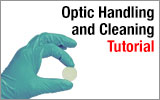
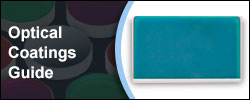
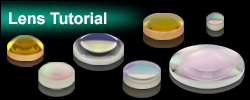
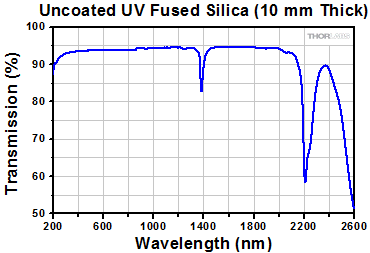
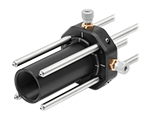
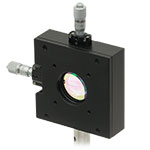


 UV溶融石英、コーティング無し平凸レンズ
UV溶融石英、コーティング無し平凸レンズ